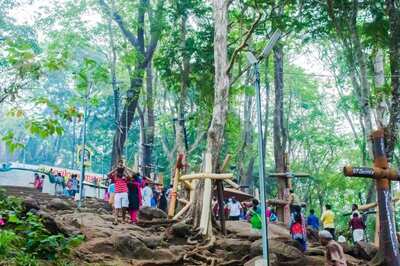
views
Bengaluru: Currently at the peak of summer, Bengaluru is facing an acute water shortage and among the worst hit are newly-developed areas and IT corridors.
The revised master plan for the city, published by the Bengaluru Development Authority (BDA), has predicted that city’s population will increase by approximately 8 million and reach 20.3 million between 2019 and 2031. According to a study by Indian Institute of Science (IISc), the city will become inhabitable in the next few years if its population continues to grow at this alarming rate. This population growth has put a strain on the city's natural resources and led to the depletion of lakes and wells.
The key affected areas include HSR Layout, Whitefield and Bellandur. The problem can also be attributed to the city attracting a lot of migrants from all over India due to its vibrant culture, ideal weather and booming industries.
Even the Cauvery water that two-thirds of Bengaluru receives is not sufficient due to the Supreme Court ruling which limits the amount of water that can be released to the city. Due to inefficient city planning, the newer areas are forced to depend on tankers and borewells. A survey by the Indian Institute of Human Settlements pointed out that the per capita groundwater availability is rapidly declining -- in 1951 it was 14,180 litres a day, by 2001 it reduced to 5,120 litres, and is expected to come down to 3,670 by 2025. A total of 21 major cities are estimated to run out of ground water by 2020 and 54 per cent of wells in India are seeing a fall in water levels.
College student Aranyak Nanda, who lives in Tavarekere, has been directly affected by the water shortage. He hasn't been getting a regular supply of water since two months. "The whole of March till mid-April, there was barely any water. We got water only for half-an-hour in the morning. For the last one week or so, I have been getting water only for half a day".
The water woes have played a big role in his decision to move out of his current apartment. "Sometimes I have to go to my friends' homes to just take a shower. We have just one bucket of water for my roommate and I. It has affected our daily routine and it has been difficult to adjust".
Sandeep Anirudhan, co-founder of Coalition for Water Security -- a group of experts working on solving the water problem -- called the issue an emergency that must be dealt with at the earliest. "Already, water is being auctioned to highest bidders in some areas of the city. If this is not a case of emergency, what is? Borewells have reached depths of 1,500 feet and below. This is catastrophic already," Anirudhan said.
According to a report in The Hindu, Ramesh Reddy, a private water supplier for over two decades in southeast Bengaluru, said that demand for water had almost doubled over the last one month as borewells were drying up. “The problem is, borewells that we draw water from are drying up, leading to a severe demand-and-supply gap. Even if we want to, we are not able to supply water.”
The decreasing levels of ground water put water tankers in the limelight as most residential areas around the city depend on these tankers for drinking water. Feeding off the residents’ never-ending demand for water supply and the unavailability of other sources has led to a deep-rooted tanker business that monopolises and uses the citizens’ helplessness to their advantage with unauthorised raised prices. Apart from the scarcity of water and the exorbitant prices of these tankers, the water provided is of poor quality and unhygienic.
In most parts of Bangalore, the government water supply has drastically failed. This leads to exploitation as people have been denied basic facilities. We should not look at these mafias as a business that helps the citizens when the government has failed, but as people who are exploiting people’s predicament. Apart from the occasional rain showers in April, the city did not receive adequate amount of rain, and the little that it did receive has not impacted the ground water table as the topography of Bengaluru is rocky and the land is parched.
Anirudhan said that the city is a dry, elevated plateau that was made habitable by the wisdom of the natives, who planted trees and forests to attract rains, and built lakes to harvest rain water. The fallacy of modern engineering approach in problem solving has reversed this wisdom and made the situation worse in the past 50-100 years. “We need to pass laws that incentivise reviving of local water resources, and penalise use of imported water. Carbon fines need to be imposed on water that needs to travel.”
He adds, “Subsidies must be completely removed from Cauvery water, and must be provided to every ward that ensures that local lakes are kept clean and maintained, and local wells are recharged. The local communities have to be empowered once again. This is the way forward.”
Each year, as Bengaluru’s water decreases and population increases, the government is faced with the daunting task of ensuring that water reaches all. Due to the problem of water mafias and infrastructure that has not kept pace with time, the common man is the worst hit. Individuals and government bodies need to work together for this common goal and our decisions today will decide whether Bengaluru will lose it water war or gain water security.




















Comments
0 comment